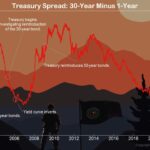In Part I, I wrote to:
You may want to pay attention to what public pensions are buying and, more often than not, do the exact opposite. Case in point, a few years ago this group loaded up on “alt-investments” and hedge funds. Don’t look now, but hedge funds, which charge an exorbitant 2-and-20 (2% per year on your assets under management and 20% of your investment gains), are going out of business left and right.
And then, as reported yesterday in The WSJ, the California Public Employees Retirement System (CALPERS) spent more than $2 billion on Southern timberland and harvested the trees at depressed prices to pay interest on money borrowed to buy it. It has since sold much of its land at a loss. You can’t make it up. Some are saying that CALPERs can afford to take the loss. That’s false. It’s already in hock to its retired teachers and other members.
Remember, to be a successful long-term investor, you need to think about each dollar you save as if it were your child. You will do everything in your power to keep it safe. Because once you do that, you begin to respect the unspeakable pain a loss can bring to a portfolio.
Don’t look now, but the public pension crowd is embracing passive indexing full bore—that should be a dire warning to those who own passive index funds.
A reader emailed:
Hi EJ,
Thanks for the excellent piece on public pension plans, and for all the great work you and your colleagues do at Young Research. I started reading Dick Young Sr some 20 years back and, boy, what a fund of investment knowledge you guys have between you.
I had a quick follow-up question. Why does it concern you that public plans are buying passive index funds? Is it that they will create price over-valuation and reduced returns? Or something else?
My answer:
Thank you for your continued support. Part of my concern is politics. Managers of public plans are part of a political machine. They’re as much concerned about saving their job as they are beating a benchmark (a waste of time in my opinion). And it’s hard for them not to be influenced by the relationships they have with those pushing their products on them.
Then there’s the fear of failure. It’s much easier for managers to buy what’s popular, whether it be alt-investments, hedge funds or passive funds, and fail because—everyone else was doing it. Investing should not be a beauty contest. In fact, the unloved and forlorn are often much better selections.
The most popular passive funds mirror the S&P 500. Since it’s a market-cap weighted index, the biggest companies have the biggest impact on the direction of performance. Think of the FAANGs as the 800-pound gorilla here—most have traded at nose-bleed valuations. As we’ve seen this week, even the big guys answer to reality.
Read Part III by clicking here.
E.J. Smith - Your Survival Guy
Latest posts by E.J. Smith - Your Survival Guy (see all)
- “Happy I Found Richard C. Young’s Intelligence Report” - April 16, 2024
- Residents Lose Faith in Blue Cities - April 16, 2024
- Want to Make and Keep Generational Wealth? - April 16, 2024
- Your Retirement Life: Watching The Masters and More - April 15, 2024
- Fight Food Inflation with Gold - April 15, 2024















